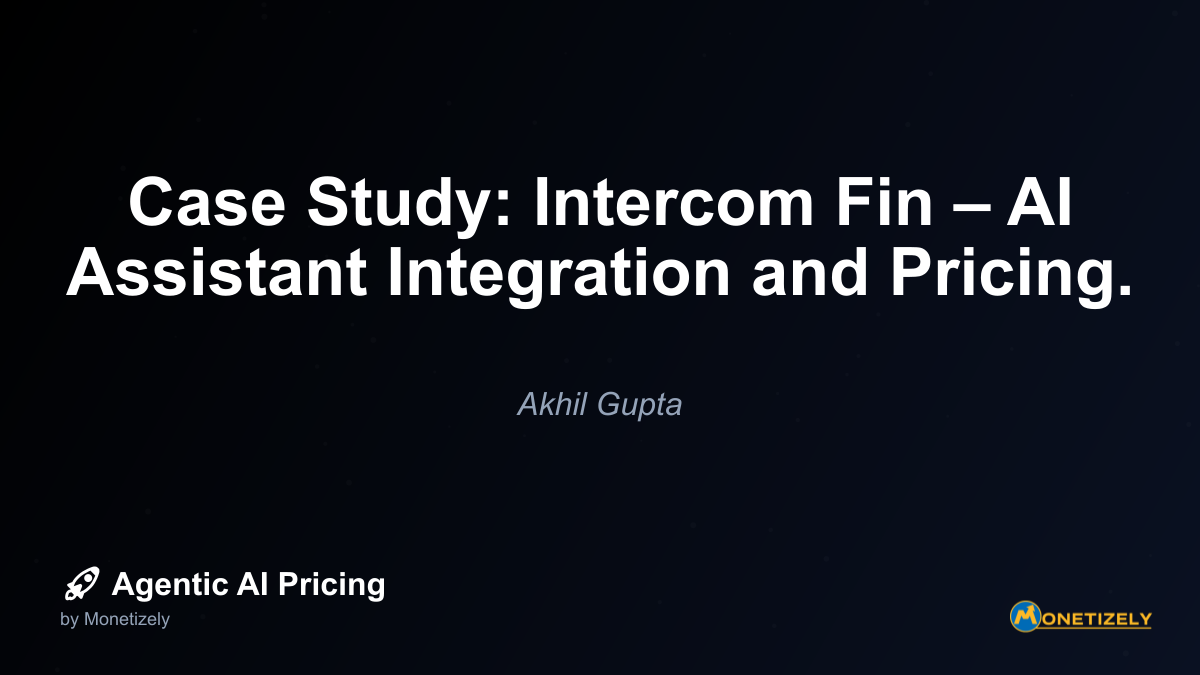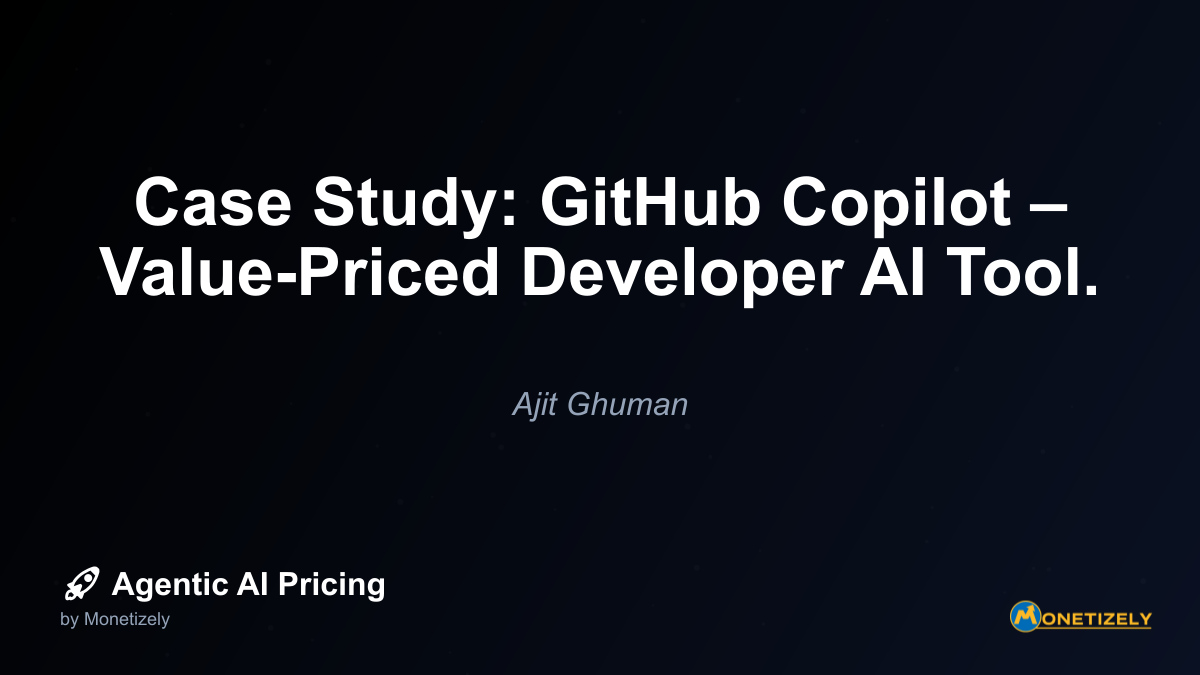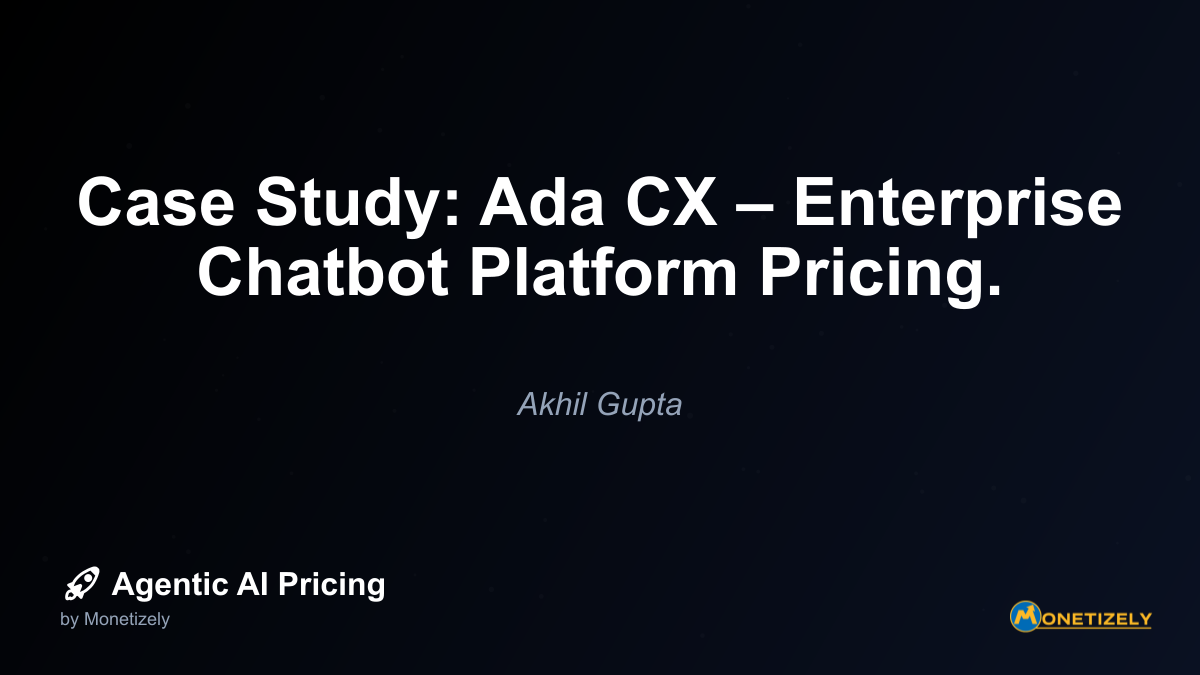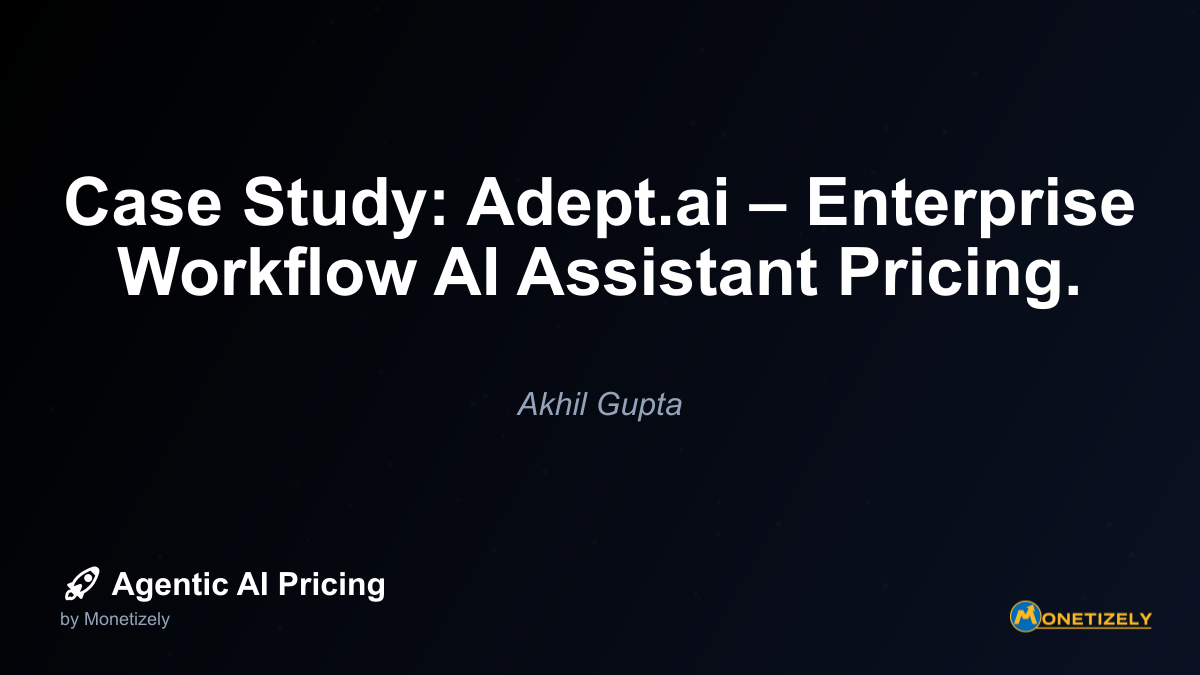· Akhil Gupta · Case Studies · 8 min read
Case Study: Intercom Fin – AI Assistant Integration and Pricing.
AI and SaaS Pricing Masterclass
Learn the art of strategic pricing directly from industry experts. Our comprehensive course provides frameworks and methodologies for optimizing your pricing strategy in the evolving AI landscape. Earn a professional certification that can be imported directly to your LinkedIn profile.

Strategic Value of the “Free During Beta” Approach
Intercom’s decision to offer Fin without additional charges during its beta phase represents a calculated investment rather than simply giving away value. This strategy aligns with what many AI pricing experts call “value-based adoption” – where the initial focus is on demonstrating and establishing value before implementing monetization.
For Intercom, this approach offered several strategic advantages:
1. Reduced Adoption Friction
By eliminating price as a consideration during the beta phase, Intercom removed a significant barrier to trying Fin. This was particularly important given that AI assistants were still relatively new in customer support contexts. Many customers might have hesitated to pay upfront for an unproven technology, but were willing to experiment when offered at no additional cost.
2. Competitive Differentiation
The introduction of Fin allowed Intercom to differentiate itself in an increasingly competitive customer support platform market. By adding AI capabilities at no initial cost, they created a compelling reason for customers to choose or remain with Intercom rather than exploring competitor offerings.
3. Data Collection and Product Improvement
Every interaction with Fin generated valuable data that Intercom could use to improve the AI assistant’s performance. This created a positive feedback loop: more users led to more interactions, which led to better AI performance, which in turn encouraged more usage.
4. Customer Lock-In and Increased Switching Costs
As customers began incorporating Fin into their support workflows, they became increasingly dependent on its capabilities. This dependency increased switching costs, making customers less likely to migrate to competing platforms even if Intercom eventually implemented a premium fee for Fin.
The Transition from Free Beta to Monetization
The true test of Intercom’s pricing strategy would come when transitioning Fin from a free beta feature to a monetized product component. This transition represents a critical phase in the AI product lifecycle that many companies struggle to navigate effectively.
Intercom approached this transition with careful consideration of several key factors:
Value Demonstration Before Monetization
By the time Intercom began considering monetization options for Fin, customers had already experienced its benefits firsthand. Support teams had seen reduced response times, customers had received more immediate answers, and organizations had data on cost savings. This real-world value demonstration made it easier to justify eventual pricing changes.
Tiered Implementation
Rather than implementing a single pricing model for all customers, Intercom recognized the need for a tiered approach. This allowed them to align pricing with the value received by different customer segments:
- Basic functionality remained included in standard plans
- Advanced capabilities became premium features
- Enterprise-level customization commanded higher price points
Usage-Based Components
Recognizing that AI usage can vary significantly between customers, Intercom incorporated usage-based elements into their Fin pricing structure. This approach aligned costs with value received while providing predictability for customers.
This approach mirrors successful strategies seen in other AI product launches, where companies focus first on adoption and only later on monetization once value has been firmly established.
The Product Stickiness Factor
One of the most significant aspects of Intercom’s strategy with Fin was how it increased product stickiness – the degree to which customers become dependent on a product and resistant to switching to alternatives.
How Fin Enhanced Intercom’s Stickiness
Fin contributed to Intercom’s product stickiness in several important ways:
1. Workflow Integration
As support teams incorporated Fin into their daily workflows, it became an essential part of their operations. The AI assistant handled routine queries, suggested responses, and freed human agents to focus on complex issues. This integration made the prospect of switching to a different platform increasingly disruptive.
2. Customization and Learning
Over time, Fin learned from each organization’s specific customer interactions, developing a knowledge base tailored to their unique needs. This accumulated learning represented significant value that would be lost if a customer switched to a different platform.
3. ROI Accumulation
As customers used Fin, they began to see measurable returns on their Intercom investment through metrics like:
- Reduced response times
- Higher first-contact resolution rates
- Improved customer satisfaction scores
- Lower support costs per ticket
These tangible benefits made the overall Intercom platform more valuable to customers, increasing their willingness to pay when Fin eventually transitioned to a paid feature.
Lessons from Intercom’s Approach for AI Product Pricing
Intercom’s strategy with Fin offers several valuable lessons for companies considering how to price AI features within existing SaaS products:
1. Value Demonstration Precedes Monetization
Intercom recognized that customers needed to experience Fin’s benefits before they would be willing to pay for them. This patient approach to monetization allowed them to build a strong case for the AI assistant’s value.
2. Integration Trumps Standalone Pricing
Rather than positioning Fin as a separate product with its own pricing structure, Intercom integrated it into their existing platform. This approach emphasized how the AI assistant enhanced the core product rather than competing with it.
3. Data Advantages Compound Over Time
Each interaction with Fin improved its performance, creating a virtuous cycle that increased its value to customers. This compounding effect meant that early adoption, even at no cost, created significant long-term value.
4. Segmented Value Capture
Intercom recognized that different customers would derive different levels of value from Fin. Their eventual pricing strategy reflected this reality, with tiered options that allowed them to capture more revenue from customers who received greater value.
Balancing Costs and Revenue in AI Feature Pricing
A critical consideration in Intercom’s pricing strategy was balancing the costs associated with providing Fin against the revenue potential of the feature. This balance involves several key components:
Understanding the Cost Structure
Intercom’s costs for providing Fin included:
- API costs to OpenAI: Each interaction with Fin incurred costs based on the tokens processed.
- Development resources: Building and maintaining the AI assistant required ongoing engineering investment.
- Training and customization: Adapting the AI to different customer contexts required additional resources.
- Support and infrastructure: Ensuring reliable performance demanded backend infrastructure.
Revenue Potential Assessment
Against these costs, Intercom had to weigh several revenue opportunities:
- Direct monetization: Eventually charging explicitly for Fin access.
- Reduced churn: Customers finding value in Fin would be less likely to leave Intercom.
- Competitive advantage: The ability to win new customers by offering superior AI capabilities.
- Upsell opportunities: Customers using basic Fin features might upgrade to access premium capabilities.
This cost-revenue analysis informed Intercom’s decision to initially offer Fin without additional charges while developing a long-term monetization strategy that would ensure profitability.
Market Response to Intercom’s Fin Pricing Strategy
The market’s response to Intercom’s approach with Fin offers insights into the effectiveness of their pricing strategy:
Customer Adoption Patterns
Initial adoption of Fin exceeded Intercom’s expectations, with a significant percentage of eligible customers activating and using the AI assistant within the first few months. This high adoption rate validated the decision to eliminate price barriers during the beta phase.
Competitor Reactions
Intercom’s introduction of Fin prompted responses from competitors, many of whom rushed to develop or acquire similar AI capabilities. However, Intercom’s head start in collecting user data and refining their AI gave them a temporary advantage in the market.
Analyst Perspectives
Industry analysts generally praised Intercom’s measured approach to Fin’s rollout and pricing. The strategy was seen as balancing innovation with business sustainability, avoiding the pitfalls of either giving away too much value or pricing the feature out of reach for most customers.
Future Implications for Integrated AI Pricing
Intercom’s experience with Fin highlights several trends that will likely shape how companies price AI features in the coming years:
1. Bundled vs. À La Carte Approaches
Companies will need to decide whether to bundle AI capabilities into existing products or offer them as separate, paid add-ons. Intercom’s initial bundling approach focused on adoption, with the potential to unbundle certain premium features later.
2. Usage-Based Components
As AI usage costs remain variable, more companies will likely incorporate usage-based elements into their pricing models, even within subscription-based products. This hybrid approach allows for alignment between costs and revenues.
3. Value-Based Segmentation
Different customer segments derive different levels of value from AI features. Future pricing models will likely become increasingly sophisticated in capturing value proportional to the benefits received by each segment.
4. Freemium AI Layers
The strategy of offering basic AI capabilities for free while charging for advanced features is likely to become more common, creating “freemium AI layers” within existing SaaS products.
Conclusion: The Strategic Patience of Intercom’s Approach
Intercom’s approach with Fin demonstrates strategic patience in AI feature monetization. By prioritizing adoption over immediate revenue, they positioned themselves for long-term success in several ways:
- They built a substantial user base quickly by eliminating price barriers.
- They collected valuable data that improved their AI’s performance.
- They increased product stickiness, making customers more resistant to competitor offerings.
- They established a foundation for future monetization based on demonstrated value.
For companies considering how to price AI features within existing products, Intercom’s case offers a compelling model: focus first on driving adoption and demonstrating value, then implement a pricing structure that aligns with the value customers have already experienced.
This “prove-then-price” approach requires patience and investment but creates a stronger foundation for sustainable monetization than rushing to capture revenue before value has been firmly established. As AI becomes increasingly integrated into SaaS products, this balanced approach to pricing will likely become more common among companies seeking to maximize both adoption and long-term revenue.
The Intercom Fin case ultimately demonstrates that in the emerging field of AI pricing, sometimes the most profitable strategy is to delay profitability until value has been unquestionably proven. This principle may serve as a guide for other companies navigating the complex intersection of AI innovation and pricing strategy in the years ahead.
Co-Founder & COO
Akhil is an Engineering leader with over 16+ years of experience in building, managing and scaling web-scale, high throughput enterprise applications and teams. He has worked with and led technology teams at FabAlley, BuildSupply and Healthians. He is a graduate from Delhi College of Engineering and UC Berkeley certified CTO.
Pricing Strategy Audit
Let our experts analyze your current pricing strategy and identify opportunities for improvement. Our data-driven assessment will help you unlock untapped revenue potential and optimize your AI pricing approach.




